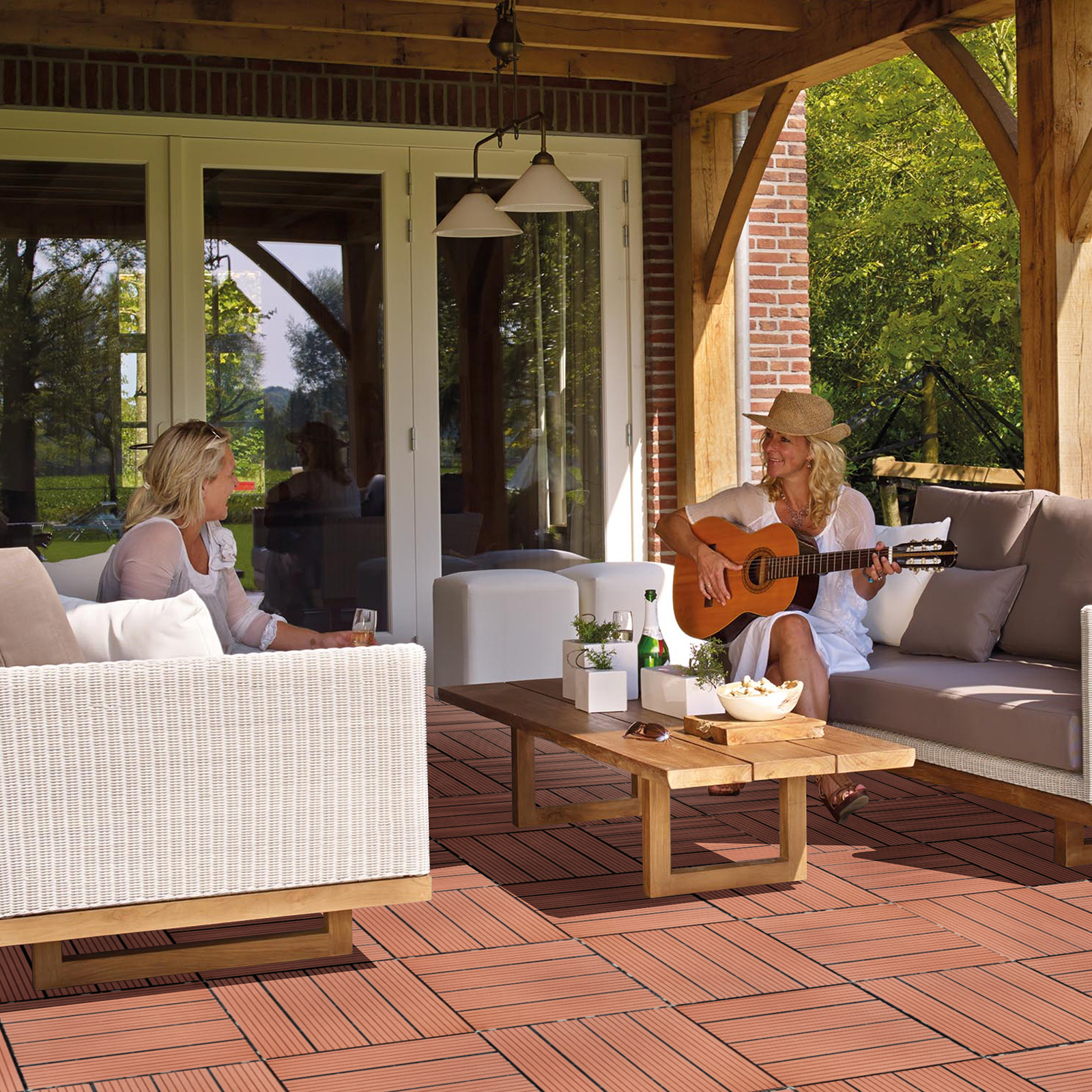The Ultimate Guide: How to Pick PERFECT Plastic Deck Tiles in 5 Stress-Free Steps
part 1:
Introduction: Why Plastic Deck Tiles Are a Game Changer
When it comes to upgrading your outdoor space, few things can transform the look and feel as quickly and effectively as plastic deck tiles. Whether you’re planning to enhance your patio, balcony, poolside, or garden, the right deck tiles can make a world of difference. These tiles are a popular choice due to their affordability, ease of installation, and durability. In this ultimate guide, we’ll break down five simple yet important steps to help you select the perfect plastic deck tiles for your needs.

Step 1: Assess Your Outdoor Space
Before diving into the world of plastic deck tiles, the first thing you need to do is assess your outdoor area. Consider the size, shape, and purpose of the space you’re working with. Is it a small balcony, a large backyard, or an expansive poolside? Understanding your space will allow you to make informed decisions on how many tiles you need and what sizes will work best.
Additionally, consider how you plan to use the space. Are you looking for a casual area for relaxing, or do you want a more polished look for entertaining guests? A patio used for BBQs may benefit from slip-resistant and weather-resistant tiles, while a poolside area may require waterproof, quick-drying tiles. Knowing the intended function will influence the type of plastic deck tiles that will work best for you.
Step 2: Choose the Right Material
Not all plastic deck tiles are created equal. They come in a variety of materials, including high-density polyethylene (HDPE), PVC, and polypropylene. Understanding the material composition is essential to ensure that the tiles will suit your environmental conditions and desired aesthetics.

HDPE: High-density polyethylene is a popular choice for its superior durability and resistance to weathering. It’s a fantastic option for areas with fluctuating temperatures and high moisture levels.
PVC: Polyvinyl chloride (PVC) is lightweight, easy to maintain, and resistant to chemicals. It’s a common material used for decking in areas where cleaning is a priority, such as around pools or in places with heavy foot traffic.
Polypropylene: Polypropylene offers the benefit of flexibility, making it an excellent choice for surfaces that require customization. These tiles tend to be UV-resistant, which is great for areas exposed to direct sunlight.

By carefully selecting the material that suits your space’s needs, you’ll ensure that your tiles last longer and perform better under various conditions.
Step 3: Consider the Tile Design and Aesthetic Appeal
Now that you’ve narrowed down your options based on size and material, it’s time to think about aesthetics. Plastic deck tiles come in a wide array of colors, patterns, and textures, so you have plenty of options to match your personal style and outdoor theme.
Wood-Look Tiles: For a natural, rustic look without the maintenance of real wood, choose plastic deck tiles that mimic wood grains. They combine the charm of timber with the durability of plastic, making them an excellent choice for a wide range of outdoor settings.

Stone and Slate Designs: If you’re going for a more contemporary or upscale look, consider tiles with a stone or slate finish. These tiles offer a sophisticated appearance and are ideal for creating an elegant outdoor area.
Solid Colors: Sometimes, simplicity is key. If you prefer clean lines and a modern look, solid-colored tiles in shades like grey, beige, or black can create a chic and minimalist outdoor space.
The design of your deck tiles should align with the overall theme of your home’s exterior and your personal style preferences. Choose colors and finishes that either complement or contrast the existing elements of your space, such as your furniture, lighting, and landscaping.

Step 4: Think About Ease of Installation and Maintenance
One of the biggest advantages of plastic deck tiles is how easy they are to install. Most plastic deck tiles are designed with interlocking mechanisms, meaning you can assemble them without the need for nails, glue, or professional help. This makes them perfect for DIY enthusiasts who enjoy taking on home improvement projects themselves.
Before purchasing, check the tile’s installation instructions. Some tiles may require a simple snap-together design, while others might require a bit more effort. If you’re a beginner, opt for tiles that are user-friendly and offer clear instructions.
Maintenance is also an important consideration. Unlike wood decking, plastic deck tiles are relatively low-maintenance. They won’t rot, warp, or splinter, and cleaning them is as simple as sweeping or washing them with soap and water. However, some tiles may require periodic maintenance, such as removing dirt from crevices or replacing any damaged pieces. Look for tiles with a smooth finish for easier cleaning and maintenance.
Step 5: Factor in Budget and Longevity
Plastic deck tiles come in a wide price range, so it’s important to set a realistic budget for your project. Keep in mind that while some tiles may be cheaper upfront, others may offer better longevity and durability, making them a more cost-effective choice in the long run.
Before making your final decision, compare the cost per square foot of different options, and weigh this against the expected lifespan of the tiles. Investing a little more in high-quality tiles can save you money in the future by reducing the need for repairs or replacements.
part 2:
Step 6: Evaluate the Tile’s Slip Resistance and Safety Features
When choosing plastic deck tiles, safety should be a top priority, especially in outdoor spaces exposed to moisture. Many plastic deck tiles are designed with slip-resistant surfaces, which are ideal for areas that experience rain or are located near pools. Slip resistance is an essential feature if you want to avoid accidents, especially if children or elderly family members will use the space regularly.
To ensure your tiles are safe, look for those with textured surfaces or integrated drainage systems. These features allow water to flow through the tiles, reducing the risk of puddles and wet spots, which can be dangerous. Additionally, tiles with rounded edges can help prevent tripping hazards, making them a safer option for high-traffic areas.
Step 7: Explore Sustainability and Eco-Friendly Options
In today’s world, sustainability matters more than ever. If you’re environmentally conscious, look for plastic deck tiles made from recycled materials or those that are recyclable themselves. Many manufacturers now offer eco-friendly plastic tiles that are designed to minimize the environmental impact without compromising on durability or aesthetic appeal.
By opting for eco-friendly materials, you’re not only contributing to reducing waste but also ensuring that your outdoor space is built with long-lasting, sustainable products. Research the manufacturer’s sustainability practices and check if the tiles are certified by environmental organizations or have eco-friendly labels.
Step 8: Take Climate and Weather Conditions into Account
Your local climate and weather conditions play a significant role in the longevity and performance of your plastic deck tiles. For example, in areas that experience heavy rain or snow, you’ll want to choose tiles that are resistant to moisture, mildew, and mold. On the other hand, tiles exposed to extreme heat or direct sunlight should have UV resistance to prevent fading over time.
Plastic deck tiles are generally designed to withstand a variety of weather conditions, but checking their specifications to ensure they are suitable for your climate is crucial. Choose tiles that are specifically engineered to handle the environmental challenges of your location.
Step 9: Read Reviews and Compare Brands
Before making your final purchase, it’s always a good idea to read reviews and compare brands. Look for feedback from other customers who have used the tiles in similar outdoor settings. Reviews can provide valuable insights into the product’s quality, ease of installation, and overall performance.
Additionally, some manufacturers offer warranties or guarantees on their products, which can give you extra peace of mind. A good warranty can be a sign of the manufacturer’s confidence in their product’s durability, so it’s worth considering when making your decision.
Conclusion: Enjoy Your New Outdoor Space
Choosing the perfect plastic deck tiles doesn’t have to be a stressful experience. By following these five simple steps, you can confidently select tiles that will enhance the look, function, and safety of your outdoor area. From assessing your space to considering design preferences, material, and budget, you’ll be well-equipped to create a stylish and long-lasting outdoor haven. Happy tiling!





